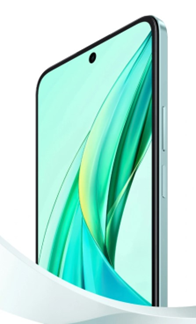Our
modern age sees smartphones as indispensable tools, serving as our primary
means of communication, information access, and entertainment. However, one
persistent challenge with these devices is their readability under direct
sunlight. Many users find themselves squinting and straining to view their
screens when outdoors, leading to frustration and inconvenience. Fortunately,
advancements in technology have paved the way for innovative solutions to this
problem, promising enhanced visibility even in the brightest of sunlight.
Advancements in Sunlight-Visible Phone Screens
Transflective Displays
Transflective
display technology represents a significant leap forward in combating the glare
and reflections that often plague traditional smartphone screens in outdoor
environments. Unlike conventional displays that rely solely on backlighting to
illuminate the screen, transflective displays leverage ambient light to enhance
visibility. By combining both transmissive and reflective properties, these
screens ensure that users can view content clearly, whether they're indoors or
outdoors. This dual-mode operation allows for optimal readability under various
lighting conditions, making transflective displays a compelling solution for
sunlit environments.

Anti-Glare Coatings
Anti-glare
coatings play a pivotal role in minimizing reflections and glare on smartphone
screens, thus improving visibility in outdoor settings. These specialized
coatings are applied to the surface of the display, reducing the scattering of
light and enhancing contrast for better readability. By mitigating unwanted
reflections and glare, anti-glare coatings enable users to focus more
effectively on the content displayed on their screens without distractions.
This technology effectively transforms smartphones into versatile devices that
can be comfortably used in bright sunlight without sacrificing usability or
visual quality, ultimately enhancing the overall user experience.
Polarizing Filters
Polarizing
filters are instrumental in optimizing screen visibility by selectively
blocking certain angles of light waves. By aligning the polarization of
incoming light, these filters help minimize glare and enhance contrast,
resulting in clearer and more readable displays. Incorporated into the design
of sunlight-readable phone screens, polarizing filters work in tandem with
other technologies to ensure optimal viewing experiences outdoors. Whether
users are browsing the web, viewing photos, or reading text messages,
polarizing filters contribute to a more enjoyable and accessible smartphone
usage experience in sunny conditions.
High-Brightness Panels
Another
key technology driving sunlight-readable phone screens is the integration of
high-brightness panels. By increasing the brightness output of the display,
manufacturers can effectively counteract the washout effect caused by sunlight.
These panels are engineered to deliver exceptional luminance levels without
compromising on color accuracy or power efficiency. Through sophisticated
backlighting systems and advanced materials, high-brightness panels enable
smartphones to maintain clarity and legibility even when exposed to direct
sunlight, ensuring a seamless user experience regardless of the lighting
conditions. The HONOR X7b 5G boasts clarity even under direct sunlight, with a maximum brightness
of 850 nits. Even in bright outdoor conditions, the screen maintains clarity,
ensuring seamless activities such as answering messages, watching videos, or
navigating.

Conclusion
As
smartphones continue to evolve, so too does the technology aimed at enhancing
their usability in diverse environments. Sunlight-readable phone screens
represent a significant breakthrough, addressing a common pain point for users
who frequently find themselves outdoors. Through the integration of
transflective displays, high-brightness panels, anti-glare coatings, polarizing
filters, and advanced ambient light sensors, manufacturers are revolutionizing
the way we interact with our devices in bright sunlight. By prioritizing
visibility and usability, these technological innovations are shaping the
future of smartphone displays, promising unparalleled clarity and readability
even under the most challenging lighting conditions.
